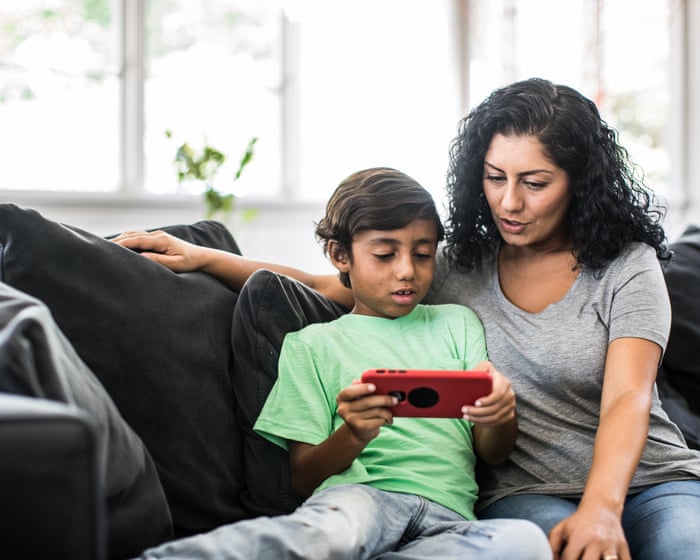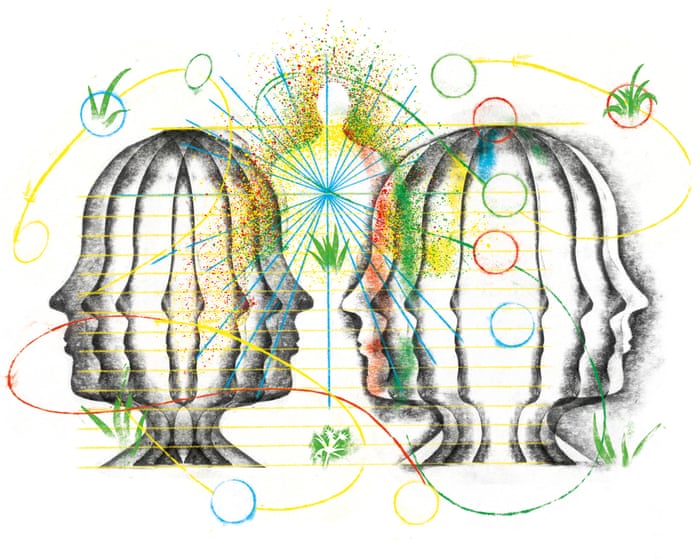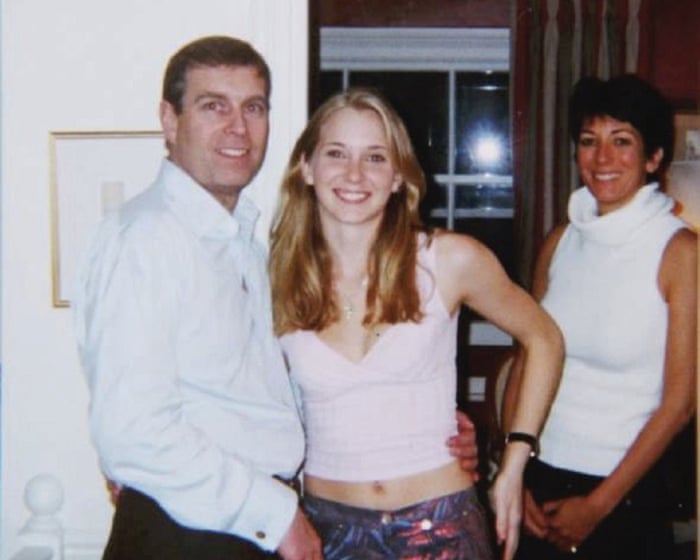Last month, when right-wing commentator Charlie Kirk was killed, video of the incident quickly spread on social media. Today, anyone with a smartphone can view disturbing videos and images, along with a flood of misinformation. While experts have warned about the impact of smartphones on children’s and teens’ mental health, most young people still have phones—and access to often distressing content.
The Guardian maintains independent journalism. We may earn a commission from purchases made through affiliate links. Learn more.
The Guardian consulted seven experts on how to talk to kids about upsetting news and content, when to start these conversations, and what to avoid.
Panel of experts:
– Anya Kamenetz, journalist and publisher of The Golden Hour newsletter
– Eugene Beresin, MD, psychiatrist and executive director of the Clay Center for Young Healthy Minds at Massachusetts General Hospital
– Tara Conley, assistant professor of media and journalism at Kent State University
– Tori Cordiano, PhD, licensed clinical psychologist in Ohio
– Jill Murphy, chief content officer of Common Sense Media
– Ashley Rogers Berner, professor at Johns Hopkins University
– Holly Korbey, author of Building Better Citizens
What’s the best way to talk to kids about bad news, such as an assassination, school shooting, or climate disaster?
Anya Kamenetz: Start by finding out what they already know. Kids pick up information at school and on social media, so it’s important to clarify any misunderstandings with clear facts. Look up information together to model balanced media consumption. After covering the basics, ask if they have questions and how they’re feeling.
Eugene Beresin: Children of all ages have three main concerns: Am I safe? Are you, the caregiver, protecting me? How will this affect my life? Listen to their worries, validate their feelings, and be available for their questions.
Tara Conley: Create practical ways to communicate during upsetting news. For example, set up a family group chat or establish online and offline spaces where young people feel connected and supported.
How should you discuss graphic content, like the video of Charlie Kirk’s shooting?
Tori Cordiano: Many teens stumble upon such videos without realizing what they’re seeing and are deeply shocked. Younger kids might feel they can’t tell their parents because they weren’t supposed to see it in the first place. It’s crucial they can talk to a trusted adult. You could say, “You might not have known what you were looking at, or maybe you sought it out to understand what happened. That’s understandable, but we should avoid watching such videos because they can have a lasting impact on our minds.”
Ashley Rogers Berner: When children hear about political violence, be honest with them. Reinforce democratic principles, like resolving disagreements peacefully. Reassure them that the government works to hold perpetrators accountable and that such violence is rare.
How can you help kids deal with misinformation?
Holly Korbey: Parents should recognize that with phones, kids are constantly exposed to the world’s worst events, and on platforms like TikTok and Instagram, facts can be distorted instantly. Additionally, when political leaders say, “Don’t trust the news,” it complicates matters further.People are often confused. A parent’s role can be to say, “Let’s review the facts. If you’ve heard something frightening, check a reliable news source to see if it’s accurate.”
Cordiano: Kids are drawn to phones because they’re a key way to connect with friends and learn about the world. It’s not wise to ignore that. Instead, we should focus on building healthy tech habits from a young age: where, when, how long, and what they’re using their devices for. This isn’t a one-size-fits-all solution, but starting with more restrictions—like fewer apps, including social media, and stricter time limits—can be helpful when kids first get a phone or tablet. For all children, it’s beneficial to avoid having devices in their bedrooms overnight, and for younger kids, using devices in open areas rather than behind closed doors is advisable. I often recommend Common Sense Media to families seeking guidance on this.
Conley: Teaching critical media literacy early on, by helping kids understand how media and technology shape social behavior, is very effective. I offer parents and caregivers tips, such as those in “Tips for Adults Supporting Kids Consuming Scary News.” The American Academy of Pediatrics also provides resources on creating a family media plan.
With so much anger and division in politics, how do you handle those conversations?
Korbey: I tell my kids that no topic is off-limits. Students who discuss controversial issues tend to become more politically engaged later. We have debates at the dinner table, and I think that’s positive.
Jill Murphy: Kids and teens will have many questions, which can lead to deeper discussions about political or cultural topics. Parents should share their values and perspectives while listening to what their children are curious about.
What should parents avoid when discussing the news with kids?
Kamentz: Avoid having TV news on in the background. Even though I used to work for NPR and grew up listening to it, depending on the story, you might want to limit exposure. You don’t always need to provide lots of information if kids haven’t asked; they process things at their own pace and have different developmental needs.
Conley: It’s best not to pretend we have all the answers or can easily explain away distressing news. Kids can see through that. We should offer humility, not arrogance.
How do you reassure kids about real risks like climate change, school shootings, immigration raids, and police violence?
Conley: When I was in college, dealing with events from 9/11 to Hurricane Katrina, my dad wrote me letters offering guidance and encouragement. I still have them and read them when I need a reminder of our shared humanity. So, I suggest a letter-writing activity for parents and educators—writing to a young person can make a big difference.
Cordiano: When a school shooting occurs, our job isn’t to make kids more anxious. We should ensure they take safety drills seriously and follow the school’s guidance.
How do you reassure kids when you, as a parent, are scared or upset by the news?
Kamentz: Take care of yourself first and make sure you have supportive adults to share your concerns with.Model healthy news habits by avoiding endless scrolling through distressing headlines before bedtime and keeping family routines free from news.
Conley: I urge both young people and adults not just to look for helpers—a nod to Mr. Fred Rogers—but to become helpers themselves. Recent research shows that offering support, such as through volunteering, helps everyone manage and cope with ongoing stress. We feel better when we assist others.
When is the ideal time to start these discussions?
Murphy: Children and teenagers encounter news quickly, often learning about events from social media influencers. Therefore, it’s wise for parents to initiate conversations early, providing information suitable for their age.
Kamentz: The truth is, we don’t always get to decide. I never planned to explain to my three-year-old that school was closed due to a global pandemic, that she needed to wear a mask, and couldn’t enter the supermarket. But that’s what happened, and now she’s a happy, healthy eight-year-old.
Frequently Asked Questions
Of course Here is a helpful and clear FAQ about discussing news violence with children based on expert advice
FAQs Talking to Children About Violence in the News
BeginnerLevel Questions
1 Why should I even talk to my child about scary news events
Its natural to want to protect them but children often hear about these events from friends school or overhearing the news An open conversation allows you to provide comfort correct misinformation and help them feel safe
2 At what age should I start these conversations
You can start as soon as a child shows curiosity or seems aware that something is wrong which can be as young as 4 or 5 The depth and detail of the conversation will change dramatically with their age
3 Whats the very first thing I should do
Start by asking them what they already know or have heard This lets you understand their specific fears and correct any misunderstandings right away
4 How can I make my child feel safe during the conversation
Reassure them that they are safe that you are there to protect them and that many caring people are working hard to keep everyone safe
5 Should I let my child watch the news with me
Its generally best to avoid continuous news coverage especially for younger children The repetitive graphic nature can be very frightening If they do see something watch with them so you can talk about it
Advanced Practical Questions
6 My child isnt bringing it up Does that mean they arent worried
Not necessarily Children often process things internally or may be afraid to ask Its a good idea to gently open the door by saying Sometimes scary things happen in the world Have you heard about any of that Im here to talk if you have questions
7 What if I dont know the answer to their question
Its perfectly okay to be honest You can say Thats a really good question and I dont have all the answers right now Lets talk about what we do know and how we can find out more together
8 How do I tailor the conversation for a teenager versus a young child




